INTRODUCTION
- The demand for ready-to-eat processed food is skyrocketing in emerging nations like India due to changing lifestyles, rising job demands, and nuclear families.
- Thermal processing is one of the most important methods for producing packaged, shelf-stable food goods.
- Food preservation through canning has advanced to include the retort processing of foods in semi-rigid, flexible laminates. It is a thermal procedure that gives products a longer shelf life while maintaining appropriate nutritional and sensory properties [1].
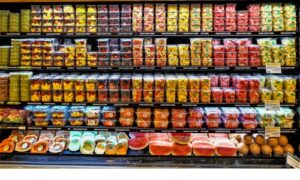
Types of Retort
The three fundamental retort processes are
- Steam
- Total Immersion.
- Falling Water
- Each category has further subcategories for steam/air, steam spray, water spray, and partial immersion.
- When choosing a particular packaging medium, it is evident that some principles of heat transmission to sealed containers have benefits over others [2].
Steam Retort
- The first technique for in-container sterilisation is the saturated steam process.
- The technique requires the retort vessel to be saturated with steam since air is considered an insulating medium.
- It is necessary for the procedure that all air be let out of the retort by filling the vessel with steam and opening vent valves.
- Since air is not allowed to enter the vessel at any point during any sterilisation stage, there is no overpressure during the sterilisation steps of this procedure.
- Air overpressure may be supplied throughout the cooling process to avoid container deformation [3].
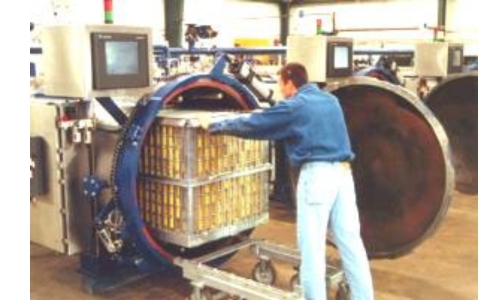
Water Immersion Retort
- The water immersion technology is the overpressure technology most frequently used to sterilise products.
- The product is completely shielded from any impact of cooling air during the water immersion process, similar to a saturated steam process in which the product is completely submerged in water.
- In contrast to saturated steam, air can be injected into the vessel during sterilisation, adding air (or steam) on top of the water creates overpressure.
- In some cases, the steam is heated by the addition of air; the hot air pressurises the processing load and stirs the water as it rises to the surface [4].
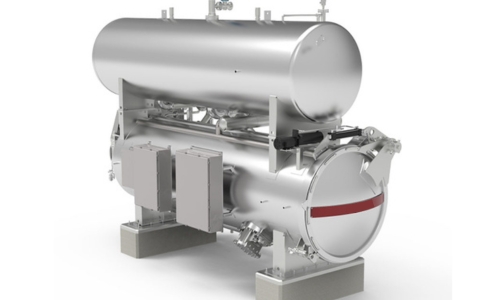
Water Spray Retort
- Like water immersion, the water spray method likewise uses overpressure, but the product is subjected to the effects of overpressure air.
- In water spray retorts, steam is the driving force for getting to the centre of the load, and it is comparable to the saturated steam process.
- Air can enter the vessel during sterilisation with the Water Spray method, unlike saturated steam, which cannot.
- By injecting air (or steam) into the retort, overpressure is created. The spray nozzles vaporise the steam and combine it with the air to overcome the insulating properties of the air [5].
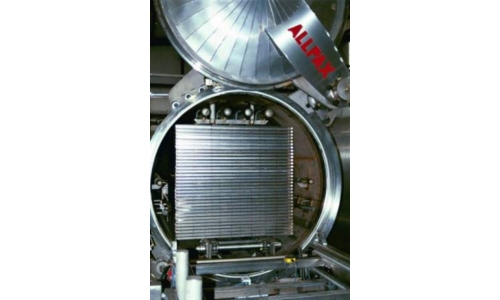
Retort Pouches
- The Reynolds Metals Company, Continental Flexible Packaging, and the United States Army Natick R&D Command developed the retort pouch.
- A retort pouch is made of laminated plastic and metal foil with three or four wide seals typically produced through aseptic processing. This makes it possible to package a wide range of beverages in a sterile manner, including everything from water to fully prepared, thermostabilised meals like ready-to-eat meals.
- Using this method, cooked or raw food is first prepared and then sealed in a retort pouch.
- The pouch is heated inside retort or autoclave machines to 240–250°F (116–121°C) for several minutes under high pressure. This method reliably eliminates all typically present microorganisms, especially Clostridium botulinum, preventing spoilage [6].
- Propylene, the first layer, is a heat-seal surface and offers strength and flexibility.
- The nylon layer, which is the following layer, provides abrasion protection.
- The aluminium coating enhances the product’s shelf life and shields it from light, gases, and odour.
- Excellent strength is provided by the last polyester layer, which is also extremely simple to print on. In addition, FDA-approved materials are used for packaging retort pouches, and sterilisation procedures boost the packaging’s tensile strength [7].
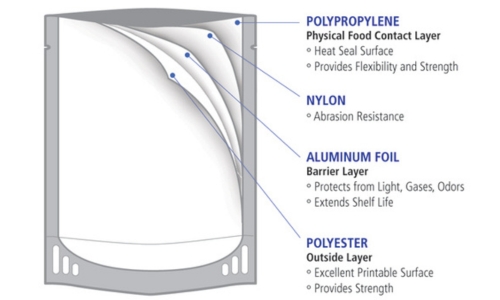
Advantages
- Different sizes and shapes
- Improved graphics capabilities;
- 85% reduction in empty weight and space; lower cost per pouch;
- Easy, safe, and less expensive transportation;
- Shelf life equal to or better than cans;
- No refrigeration or freezing;
- Easy opening facility;
- Environmental safety;
- Destruction by incineration;
- Easy reheating before consumption;
- No refrigeration or freezing
Disadvantages
- Not as durable as cans,
- Higher packing costs lower processing line speed;
- Higher investment cost;
- The possibility of rodent and insect assault and challenging leakage detection [7].





